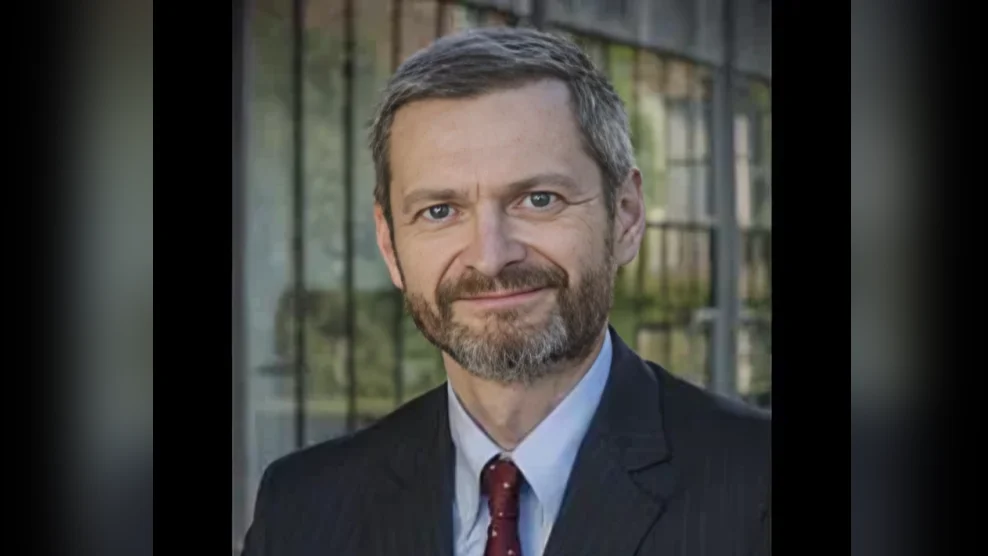Since taking office for a second term, President Donald Trump has issued more than 200 executive orders on issues including immigration, tariffs, and climate change. This high number has prompted questions about the legal foundation of executive orders and the extent of presidential power.
Executive orders have been used since the presidency of George Washington. However, no president has signed as many during their first 100 days in office as Trump. University of Chicago Law School professors William Baude, Aziz Huq, and Alison LaCroix recently discussed how these directives work and their limits.
Baude explained: "An executive order is a way for the president to exercise his legal powers, but it is not a source of power in itself. That means that every executive order has to come from some other legal power—like an enacted statute or a provision of the Constitution. An executive order can never stand on its own."
Huq noted: "An executive order is an instruction issued by the president, generally under their constitutional powers in Article II, or under a federal statute. While presidents since George Washington have used executive orders for administrative and policy ends, they are not mentioned in the Constitution."
When distinguishing between laws and executive orders, Baude said: "Federal laws have to be enacted by Congress and then presented to the president for his signature. They can deal with a broad range of topics, such as appropriating money, creating new crimes, and giving new powers to the president or other agencies. An executive order is issued by the president alone and it cannot do any of these things."
LaCroix added: "An executive order is essentially a written instrument through which the U.S. president acts to enforce or execute the laws. In order to be valid, an executive order has to be based on some power granted to the president by the Constitution—typically in Article II, which governs presidential power."
She continued: "A 'law,' by contrast, has to come from Congress, and it has to follow the procedure that the Constitution lays out for lawmaking. This is passage by a majority in each house of Congress, plus either the president’s signature or, in the event of a presidential veto, approval by two-thirds of both houses.
'Statute' and 'legislation' are synonyms for 'laws,' meaning regulations that issue from Congress, under its constitutional powers."
Regarding Trump's recent actions with executive orders, Huq observed: "As of early September 2025, President Trump has signed more than 200 executive orders. To gain a perspective, consider a simple comparison to his first term. In his first four years in office, Trump issued 220 executive orders. Many of them target ‘culture war’ issues, such as diversity, gender identity and immigration. Many have been invalidated by the federal courts, as with the birthright citizenship order."
Baude commented: "In his second term, President Trump has signed a huge range of executive orders, in part because Congress has enacted so few new laws. Some of them are lawful orders that may be good policy; some of them clearly exceed his powers; and some of them attempt to use valid presidential powers for invalid purposes. A lot of these are being challenged in the courts."
On whether these directives can be reversed or blocked:
LaCroix stated: "Yes. The most direct way of overturning an executive order is for the president who issued it, or a successor president, to revoke it. An executive order can also be invalidated by a federal court if the court determines the order exceeds the president’s powers. Finally, Congress could pass legislation either invalidating an executive order or revoking the prior law that was the basis of the order—meaning the law that the president was using the executive order to execute. For that legislation to become law, it would have to be signed by the president—which is probably unlikely—or else Congress would have to override the president’s veto with two-thirds vote mentioned above.
Congress could also indirectly frustrate the executive order by refusing to use its spending and appropriations powers to fund whatever the president is trying to do with the order."
The historical use of such directives stretches back centuries:
LaCroix explained: "The history of executive orders stretches back to our first president George Washington in 1791... Every president except William Henry Harrison...has issued what we’d now call executive orders... Before the 20th century...they weren’t systematically numbered." She highlighted Franklin D. Roosevelt's record issuance—over 3,700—and noted both FDR's active use during major crises like World War II as well as recent statistics showing Trump surpassing all predecessors in number within his current term's first hundred days.
According to data from researchers at the American Presidency Project at UC Santa Barbara, Donald Trump issued more than any previous leader within this early period; FDR signed 99 while Joe Biden had 42.
LaCroix identified key historic examples such as Lincoln’s Emancipation Proclamation ending slavery in rebelling states; Truman’s steel seizure (later struck down); and even Washington’s appointment documents establishing boundaries for Washington D.C.
Discussing limitations:
Huq said: "The president needs legal authority either under...the Constitution—the most relevant part is Article II—or a federal statute...Many speak directly to officials within ...the federal executive...Others can have direct effects on third parties..."
He further described judicial review: "If there is a person with 'standing'...then they can challenge an executive order in court....A 2025 study found some 150 judicial decisions concerning executive orders....this number is likely much bigger now..." Many challenges focus on constitutional claims like First Amendment violations or exceeding statutory authority.
For those interested in further analysis from University scholars about government structure and presidential authority shifts over time, “Battle of the Branches” offers conversations across several UChicago schools.

